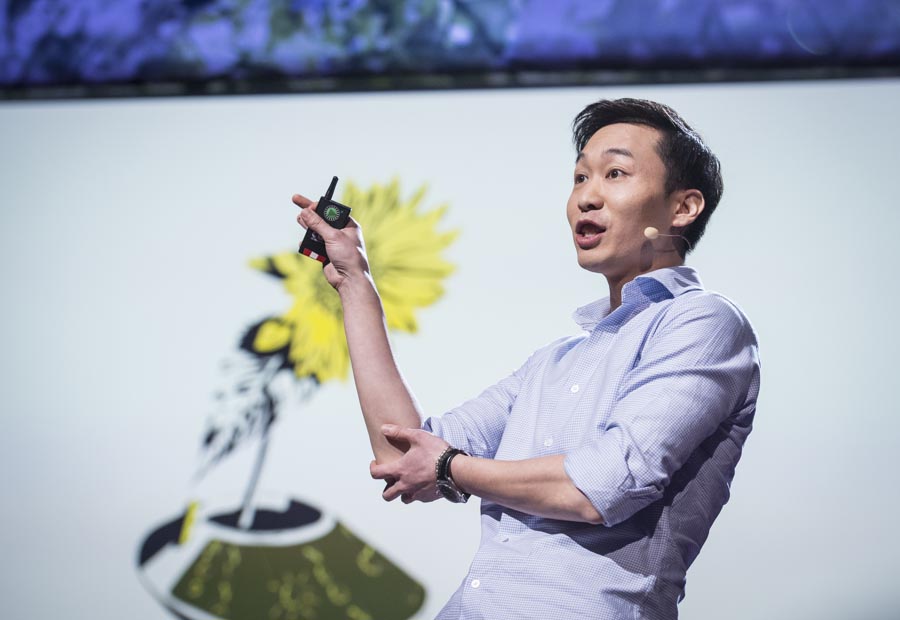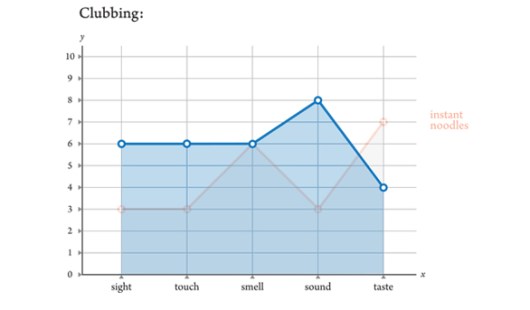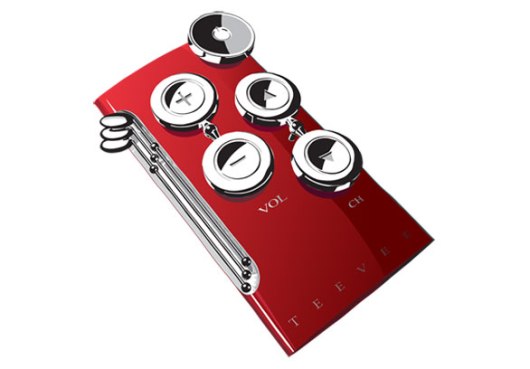Jinsop Lee is here at TED to ask a very important question: Why is sex so damn good? The audience laughs, but the playful designer is making a serious point. Great sex, and great design, is about the five senses and how and when we use them.
Lee tells us the story of a university challenge to create a clock. Lee’s design involved a sunflower that turned toward the sun; his friend Chris Hosmer‘s comprised five magnifying glasses with a shot glass of scented oil under each one. During the course of the day, five different scents would disperse to let people know the time of day just by smell. “I thought my idea was pretty good; his idea is genius,” says Lee.
Years later, a friend of Lee’s suggested to him that maybe sex is so damn good because of the five senses. Hm! he thought. He decided to start documenting the impact of various experiences on the five senses. He took a motorcycle ride around Seoul, video of which he plays to us now, and charted the quality of sights (5), sounds (5), smells (3) and tastes (0). Later, he extended this still-unscientific experiment to gather data from his friends and students, charting the impact of activities such as eating instant noodles (note the sound of slurping) or clubbing (and the unexpected pleasures of kissing).
The only perfect experience? Great sex.
As he was doing the research, Lee thought back to his friend’s clock, which integrates the sense of smell into telling the time. And it showed him what is missing from so much contemporary product design. “Designers only use design to make things look very pretty; sometimes they use touch,” he says. “We’ve ignored the other three senses. What if we started using five senses in our designs?” He shows three of his ideas: An iron that adds scented spray to make clothes smell fresh and to improve the drudgery of ironing. A toothbrush tastes like candy; when it doesn’t, it means it’s time to buy a new brush. Or, his final concept: “I don’t play the flute or the clarinet but I love the feel of pressing the keys. I decided to combine these keys with an instrument I do play, the television remote control,” he says.
The five senses aren’t everything, Lee acknowledges. There are also emotions and the all-elusive X-factor. But it’s a useful framework for designers to consider when trying to create products and experiences that can endure. Could the TED audience use a bit more taste and smell? Lee wonders. With that, bends down and grabs a bucket — and throws handfuls of candy into the audience before scampering offstage.
Jinsop Lee’s talk is now available for viewing. Watch it on TED.com »



Comments (1)
Pingback: Independent Study – Jinsop Lee (5 senses of Design) | francescallaby1225822